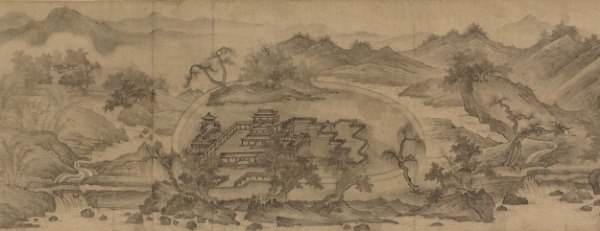 |
|
A section of the 10-meter-long A Scroll of the View of Wangchuan Villa. [Photo provided to China Daily] |
Also on display is a calligraphic piece written in the cursive caoshu script by Wen Tianxiang, the patriotic and righteous scholar-general who lived during the 13th century and is a household name in China. It is said to be one of the three calligraphic works attributed to Wen.
The exhibition brings together almost all of the important figures of Chinese painting and calligraphy, such as Ren Renfa (1254-1327), a representative of the group of artistic officials that run through Chinese art history.
The exhibition shows Ren's colored painting on silk, Feeding Royalbred Horses, in which he depicts nine horses and four officials at the imperial horse-breeding institution. The 2-meter-long piece displays Ren's delicate brushwork and shrewd observation.
While Ren was a senior official serving at the court of the Yuan Dynasty (1271-1368), his five-decade career in the government started with sorting documents. He was later promoted for his excellent work in water control and, ultimately, became a high-achieving irrigation expert.
Any museum dreams of owning a piece of art by the master painter and calligrapher Zhao Mengfu, a scholar who lived during the Yuan Dynasty and a descendant of the Song imperial family. Among the National Museum's collections, there is a calligraphic piece by Zhao which is also on show.
A Letter to Jingliang, consisting of two pieces of paper, was a private letter Zhao wrote to his nephew Zhang Jingliang. In the letter, Zhao wrote that he was acting on behalf of his friend Pu Run in expressing a wish to match Zhang's daughter with Pu's son.